Check out our guide to the best books on Japanese for beginners; from vocabulary to conversation, these books cover everything you need to start speaking it.
Around 127 million people around the world speak Japanese. This language is one of the world’s most major spoken languages, and proficiency in Japanese opens the door to many cultural and business opportunities. Speaking and reading Japanese carries several challenges. For speaking, you need to learn vocabulary and syntax and understand syllables and more, which are rhythmic units based on length.
The emphasis on the syllable or the choice of more can change the meaning of a word, which is why students must understand them. The mora and syllable work together to create the word-pitch system, which can be challenging to learn.
Written Japanese is also challenging. Today, Japanese consists of kanji, Chinese characters, hiragana, and katakana, three different character writing methods. To write and read Japanese, you must be familiar with all three. This is in addition to the verb conjugations and grammar rules you must learn to become proficient in any foreign language.
Because of these distinctions, the Japanese language can be challenging for many native English speakers to learn. Yet it is not out of reach. With the right tools, many English speakers can embrace and learn to speak the language well. Thankfully, there are many Japanese authors with books available that help with this goal. Here are the best books on Japanese for beginners to add to their library as they seek to embrace this beautiful but challenging language.
Contents
- Best Books on Japanese for Beginners Ranked
- 1. Genki by Eri Banno, Yoko Ikeda and Yutaka Ohno
- 2. Japanese from Zero! 1: Proven Techniques to Learn Japanese for Students and Professionals by George Trombley and Yukari Takenaka
- 3. Japanese for Dummies by Hiroko M. Chiba and Eriko Sato
- 4. Basic Kanji Book by Chieko Kano, Eriko Ishii, Hiroko Takenaka and Yuri Shimizu
- 5. Minna No Nihongo by Unknown Author
- 6. Fluent Japanese from Anime and Manga by Eric Bodnar
- 7. Learning Japanese Hiragana and Katakana by Kenneth G. Henshall and Tetsuo Takagaki
- 8. Living Language Japanese by Living Language
- 9. Japanese Stories for Language Learners by Anne McNulty, Eriko Sato and Rose Goldberg
- 10. A Dictionary of Basic Japanese Grammar by Seiichi Makino and Michio Tsutsui
- 11. 2000 Most Common Japanese Words in Context by Lingo Mastery
- 12. Modern Japanese Vocabulary by Edward P. Trimnell
- 13. Shadowing: Let’s Speak Japanese by Hitoshi Saito
- 14. The Kodansha Kanji Learner’s Dictionary by Jack Halpern
- 15. Remembering the Kanji, Volume 1: A Complete Course on How Not to Forget the Meaning and Writing of Japanese Characters by James W. Heisig
Best Books on Japanese for Beginners Ranked
1. Genki by Eri Banno, Yoko Ikeda and Yutaka Ohno
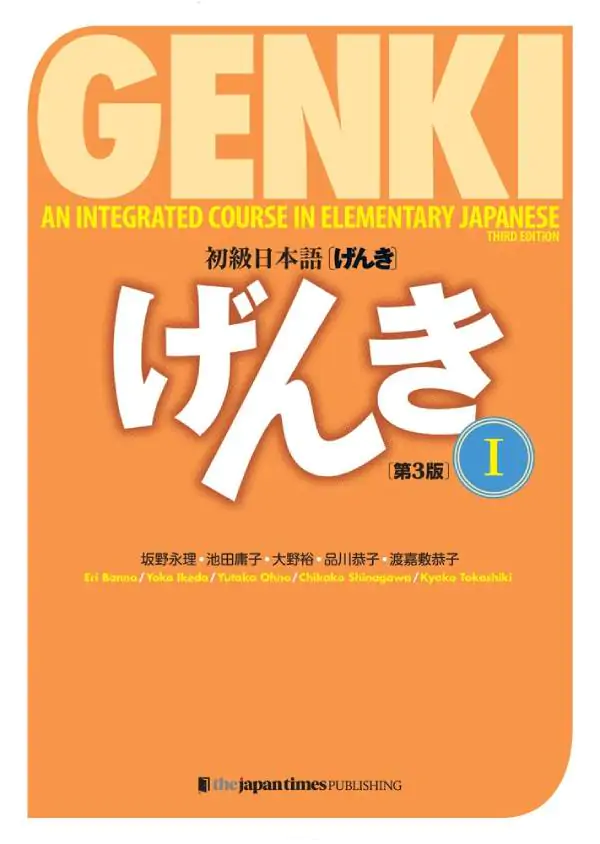
Genki is a comprehensive book that has a companion CD to help learners practice pronunciation and listening skills. It covers reading, writing, and speaking Japanese. The detailed explanations in this book make it popular for self-study, but its comprehensive nature also means it works well for learning in a classroom setting. The most recent edition of the book also has a section on Japanese culture. This book tops the list because it’s considered one of the most highly regarded teaching textbooks on this language.
“There are two important things you should know about counting items in Japanese. Firstly, we use different number words for different kinds of items; the words used for counting people are different from the words used for counting books, for example. Secondly, number words often come after, rather than before, the items counted in a sentence.”
Eri Banno, Yoko Ikeda, and Yutaka Ohno, Genki
- ◆ "Genki" is an entry-comprehensive teaching materials that are widely used in Europe and the United States.
- ◆Stretched the four skills in a balanced way in the "listening, speaking, reading and writing," and then training the basic skills of the Japanese.
- ◆This second edition, the "teaching Ease" "Learning ease" the intact of the "Genki", was to further enrich the contents.
- ◆And established a new column of the culture and lifestyle information in each section.
- ◆Included with the voice of the new recording and a total of 6 hours in the MP3 file.
2. Japanese from Zero! 1: Proven Techniques to Learn Japanese for Students and Professionals by George Trombley and Yukari Takenaka

Author George Trombley is a professional Japanese interpreter and native Japanese speaker. Japanese from Zero! is a step-by-step guide to learning the language that follows the format often used in school classrooms. It has easy-to-understand grammar lessons and modern expressions. It teaches students the Hiragana writing system. The book also includes cultural points about Japan and has a bilingual glossary to assist with learning. This integrated approach makes this a top choice for self-study.
“What are these strange letters? The Japanese language uses a set of symbols called hiragana, katakana (to spell foreign words), and kanji (to represent entire words or names).”
George Trombley, Japanese from Zero!
- Used Book in Good Condition
- George Trombley (Author)
- English (Publication Language)
- 376 Pages - 08/22/2014 (Publication Date) - Learn From Zero (Publisher)
3. Japanese for Dummies by Hiroko M. Chiba and Eriko Sato
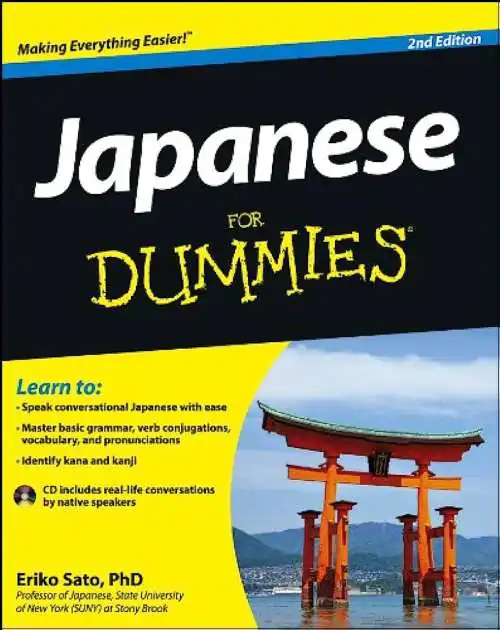
Japanese for Dummies is a comprehensive book that covers vocabulary, usage, and grammar. The book’s third edition has expanded coverage of essential grammar topics like verb conjugations and a pronunciation guide. After teaching important language concepts, this book has exercises and practice opportunities. It even has a mini-dictionary full of important vocabulary words. This text, written by Hiroko M. Chiba and Eriko Sato, has access to online audio tracks, which helps learners understand the pronunciation.
“We live in a wonderfully global and amazingly diverse society. Exchanging ideas, products, foods, and friendships across national and cultural boundaries is a key to making our lives richer and more meaningful and peaceful. Besides, traveling abroad is a lot of fun and an eye-opening experience.”
Hiroko M. Chiba and Eriko Sato, Japanese for Dummies
- Hiroko M. Chiba (Author)
- English (Publication Language)
- 416 Pages - 12/27/2018 (Publication Date) - For Dummies (Publisher)
4. Basic Kanji Book by Chieko Kano, Eriko Ishii, Hiroko Takenaka and Yuri Shimizu
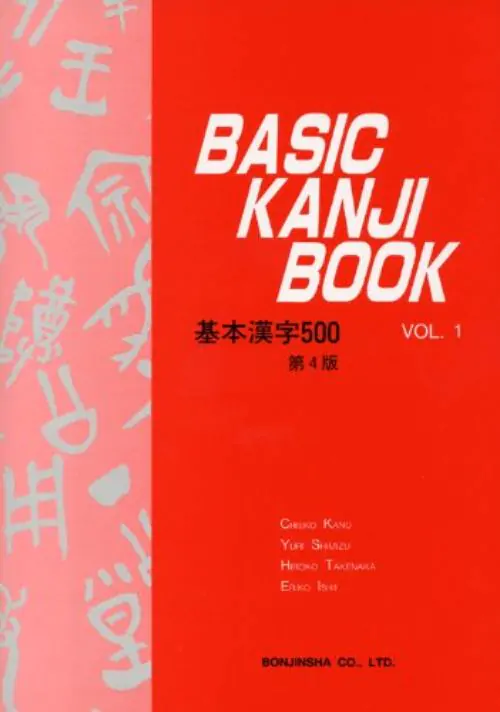
The Basic Kanji Book is a textbook for learning kanji, and each lesson has ten characters. The chapters start with background education on the kanji, then teach reading and writing lessons. At the end of each chapter, the reader can play a game or take a quiz to practice what they learned. To get an education on the full kanji, you will need volumes one and two, which cover about 250 kanji each. The book has a workbook style, giving readers a place to practice.
- Chieko Kano; Eriko Ishii; Hiroko Takenaka; Yuri Shimizu (Author)
- English (Publication Language)
- 235 Pages - 07/26/1990 (Publication Date) - Bonjinsha co., Ltd. (Publisher)
5. Minna No Nihongo by Unknown Author
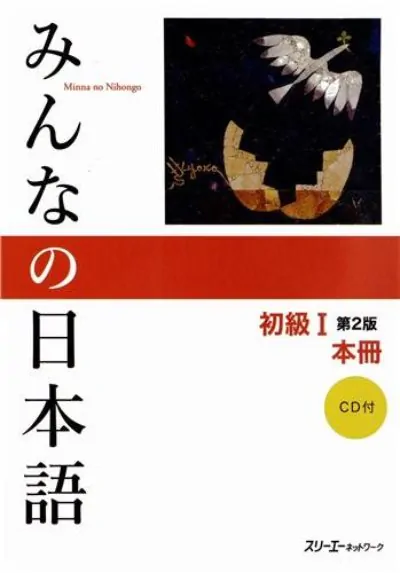
Minna No Nihongo, which translates as Japanese for Everyone, is unique because the entire book is written in Japanese. It works well for beginners, but most will need the companion book of grammar notes in English.
With this book, you can learn vocabulary and grammar with an immersive approach. Minna No Nihongo is only for those who have some basic understanding of Japanese, but it can be a great choice for those who do. It offers a CD to help with listening and understanding spoken Japanese. The publishers claim the system will have learners not just speaking the language but actually thinking in it.
- learning Japanese
- Japanese textbook
- Japanese (Publication Language)
- 249 Pages - 08/02/2012 (Publication Date) - 3a Corporation (Publisher)
6. Fluent Japanese from Anime and Manga by Eric Bodnar

If you’re a fan of anime and manga, then Fluent Japanese from Anime and Manga by Eric Bodar is for you. It uses materials from anime and manga to teach people the language. The book aims to teach readers kanji, vocabulary, and grammar structures through popular modern media. It helps add fluency and modern vocabulary and works for beginners and intermediate language learners. What sets this book apart is that it makes learning the language fun and natural rather than boring and confusing.
“Half of the people who see the title of this book might be thinking to themselves, ‘Learn Japanese by watching anime? What a load of crap!’ Such a thing certainly sounds like a crazy pipe dream that a great number of otakus share.”
Eric Bodnar, Fluent Japanese from Anime and Manga
- Bodnar, Eric (Author)
- English (Publication Language)
- 101 Pages - 10/22/2018 (Publication Date) - Independently published (Publisher)
7. Learning Japanese Hiragana and Katakana by Kenneth G. Henshall and Tetsuo Takagaki
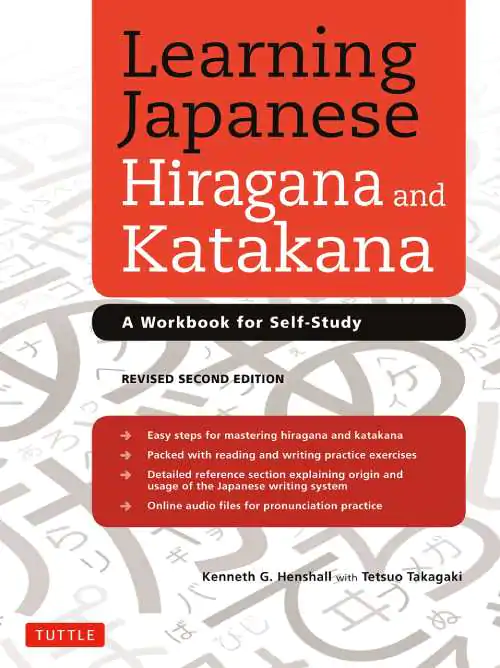
If you want to learn to write Japanese, then Learning Japanese Hiragana and Katakana may be the right fit. It will teach you the characters of the two writing styles, collectively known as kana. It covers all 92 symbols of the systems and their stroke order. Each symbol has its own space to practice writing.
This book doesn’t talk about grammar or vocabulary, but it does have online audio files that readers can use to help with pronunciation. Authors Kenneth G. Henshall and Tetsuo Takagaki use a systematic approach to their workbook to ensure readers can fully comprehend the content and learn the best techniques for writing Japanese characters.oo
“Kana are purely phonetic symbols. That is, they are written representations of pronunciation. They can express the entire Japanese language in writing, though in practice the written language uses a mixture of kana and kanji (characters taken from Chinese).”
Learning Japanese Hiragana and Katakana by Kenneth G. Henshall and Tetsuo Takagaki
- Henshall, Kenneth G. (Author)
- English (Publication Language)
- 128 Pages - 08/05/2014 (Publication Date) - Tuttle Publishing (Publisher)
8. Living Language Japanese by Living Language
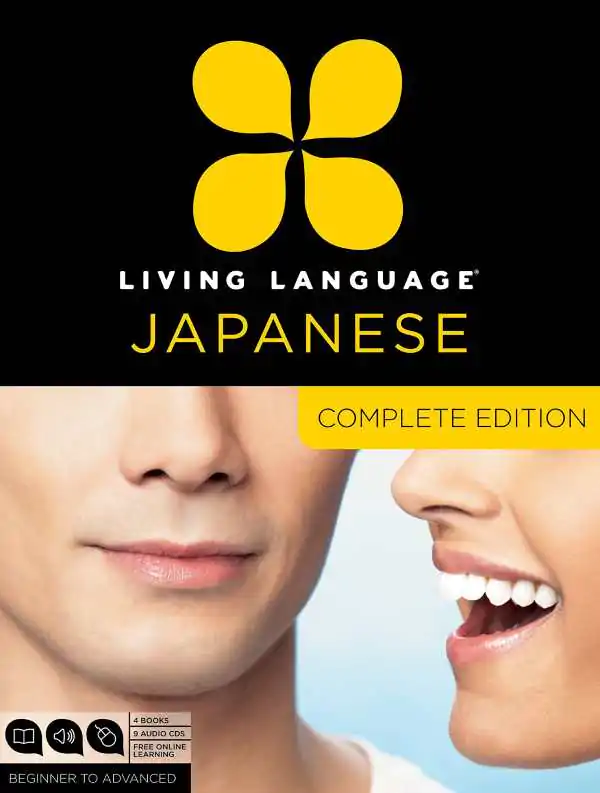
Living Language is an established language learning company, and Living Language Japanese is its Japanese textbook. The book comes with online resources and audio CDs to help learners. It uses in-depth instruction to teach adult learners rather than teaching adult learners like small children. Using vocabulary lists, sample dialogues, and in-depth grammar explanations, this book makes learning the language easier and faster for adults. The goal is to teach everyday Japanese conversation, not outdated vocabulary, and grammar.
- Living Language (Author)
- English (Publication Language)
- 256 Pages - 02/07/2012 (Publication Date) - Living Language (Publisher)
9. Japanese Stories for Language Learners by Anne McNulty, Eriko Sato and Rose Goldberg

Sometimes, reading fiction is a great way to solidify language learning. Japanese Stories for Language Learners provides that opportunity. It features five short stories in Japanese, with English translations on the opposite page. The selections by authors Anne McNulty, Eriko Sato, and Rose Goldberg include modern stories and classic folktales. To help readers, they contain vocabulary lists and practice questions. Readers even receive an audio of the book, allowing them to hear Japanese speakers read the stories aloud with the proper punctuation.
“Once upon a time, in a seaside village, there lived a fisherman named Urashima Taro. Urashima Taro was a young man with a kind heart; he went out to sea every day to go fishing to support his elderly father and mother.”
Japanese Stories for Language Learners by Ann McNulty, Eriko Sato and Rose Goldberg
- McNulty, Anne (Author)
- English (Publication Language)
- 192 Pages - 08/21/2018 (Publication Date) - Tuttle Publishing (Publisher)
10. A Dictionary of Basic Japanese Grammar by Seiichi Makino and Michio Tsutsui
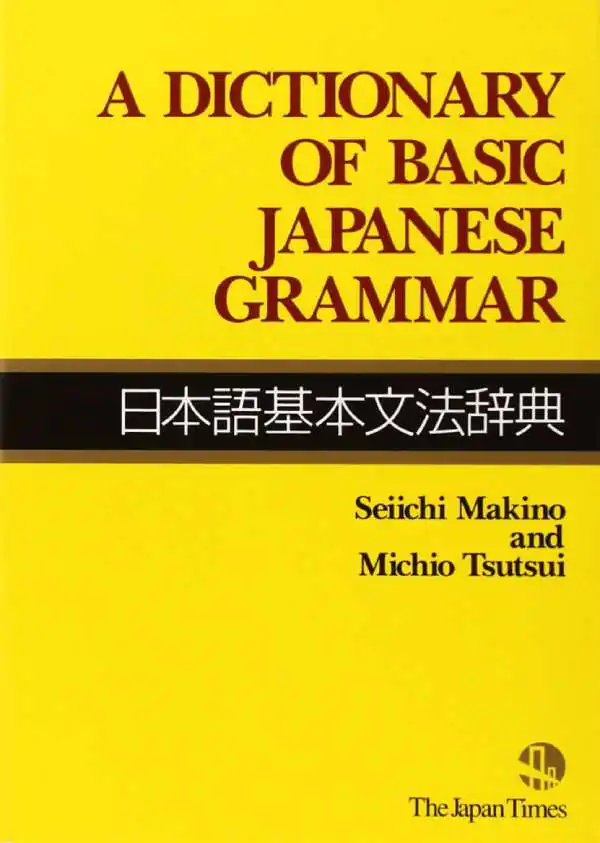
A Dictionary of Basic Japanese Grammar is essential for those looking to learn the language. It provides introductory grammar knowledge and arranges it alphabetically to make the lessons easy to navigate. The book is written for beginners and uses simple terms, so vocabulary knowledge, or lack thereof, doesn’t prevent people from learning the grammar concepts. However, it doesn’t teach vocabulary, so it is not considered a comprehensive language-mastering book. Instead, it focuses on grammar and can be an excellent companion to dictionaries or vocabulary-based books.
“Japanese is typologically classified as an SOV (Subject + Object + Verb) language, whereas English is classified as SVO. An important fact about Japanese word order is that each sentence ends in a verb, an adjective or other form of the copula, and that the order of the other sentence elements is relatively free, except for the topic noun or noun phrase.”
Seiichi Makino and Michio Tsutsui, A Dictionary of Basic Japanese Grammar
- Amazon Kindle Edition
- 牧野成一 (Author)
- English (Publication Language)
- 03/01/1989 (Publication Date) - The Japan Times Publishing (Publisher)
11. 2000 Most Common Japanese Words in Context by Lingo Mastery
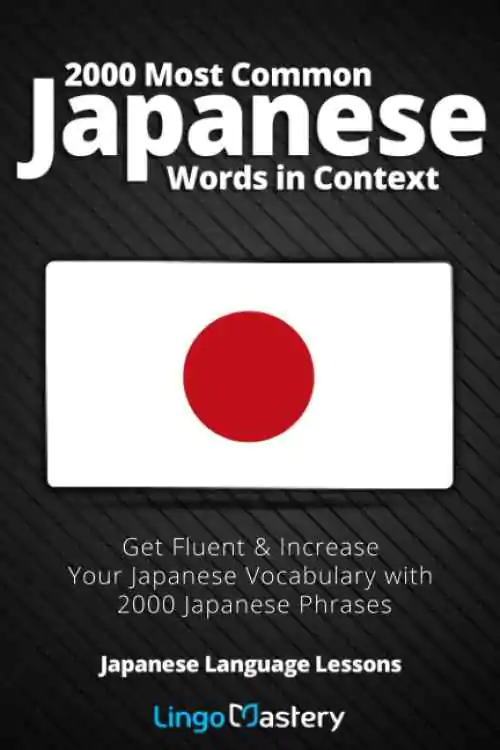
If you aim to learn Japanese vocabulary, 2000 Most Common Japanese Words in Context, published by Lingo Mastery, is a must-have. The book covers the most frequently used Japanese words and shows them used in proper context, along with English translations of the words and the sentences. The authors claim that you will understand 92% of spoken Japanese if you understand these words well.
“We all know that the best way to learn a foreign language is to live in the country where the language is spoken. However, it’s not always possible for most people with jobs, schools, and family. That is why this book is assembled to give you the ultimate experience as if you are living in Japan.”
Lingo Mastery, 2000 Most Common Japanese Words in Context
- Lingo Mastery (Author)
- English (Publication Language)
- 274 Pages - 04/08/2020 (Publication Date) - Lingo Mastery (Publisher)
12. Modern Japanese Vocabulary by Edward P. Trimnell
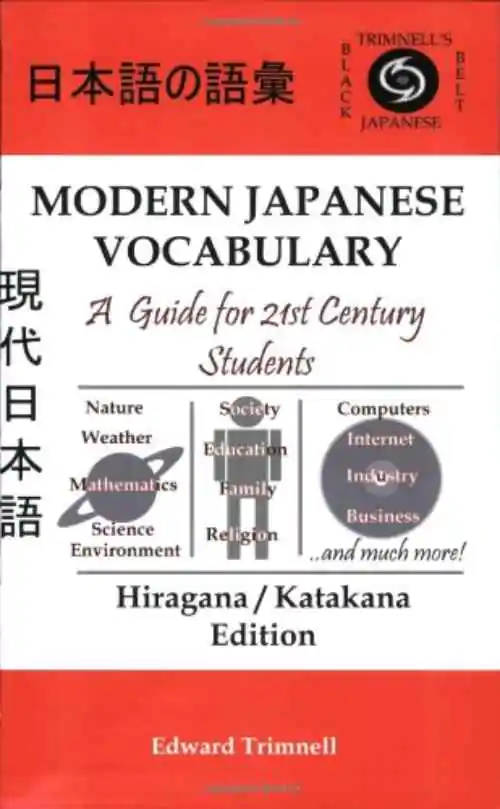
Modern Japanese Vocabulary is a great resource to have on hand while learning Japanese. Its organization presents common terms, then connects them to related words that may come up in similar conversations. For example, if you look up the word “son,” you may find the word for other family relationships on the same page.
In this book, author Edward P. Trimnell discusses repressions unique to the Japanese language and culture. The readings are all in kana, not romaji, which helps serious learners. As a modern vocabulary guide, it presents words from the 21st century. You’ll find words about politics, environmental issues, and the Internet.
“Learning Japanese vocabulary is hard! This is one more tool to help you in that task.”
Edward P. Trimnell, Modern Japanese Vocabulary
- Trimnell, Edward (Author)
- Japanese (Publication Language)
- 216 Pages - 04/01/2005 (Publication Date) - Beechmont Crest Pub (Publisher)
13. Shadowing: Let’s Speak Japanese by Hitoshi Saito
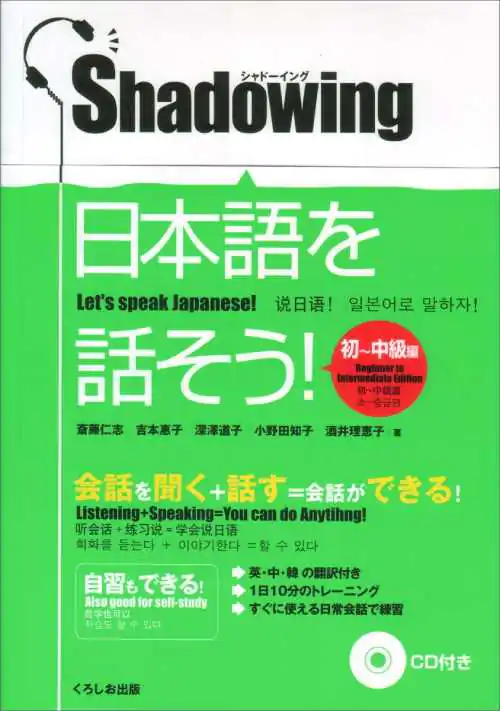
Shadowing is a technique used to teach simultaneous interpreters using a repetition process. The goal of Shadowing: Let’s Speak Japanese is to teach vocabulary and pronunciation through shadowing. The reader will have to use the audio files, but the results are excellent if they do. The book’s phrases and vocabulary are everyday languages, not boring textbook-sounding words. Several readers who used it with people who knew no Japanese found that their learners could remember and properly say several phrases at the end of their time in the book.
This book makes it on the list because it is one of the few available that use the shadowing technique as a language learning tool, making it a good choice for those who learn well using this method. A few minutes per day using this book seems to improve fluency significantly. The book also has audio content for Chinese and Korean learners, so it’s not just for English speakers wanting to learn Japanese.
- Hitoshi Saito (Author)
- English (Publication Language)
- 137 Pages - 09/01/2006 (Publication Date) - KUROSIO (Publisher)
14. The Kodansha Kanji Learner’s Dictionary by Jack Halpern
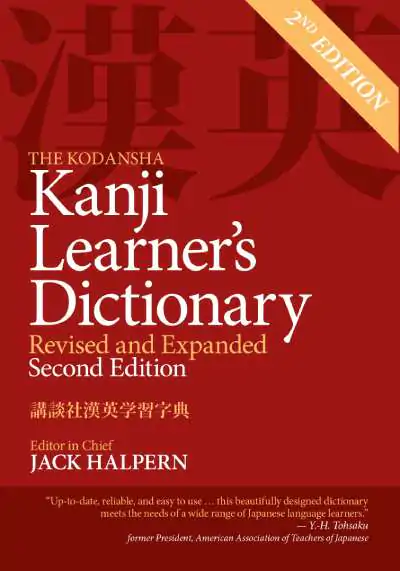
The Kodansha Kanji Learner’s Dictionary is a compact English/Japanese dictionary for kanji. In it, learners learn the word’s literal meaning and the sense of each character, which helps them understand how characters can be connected to have compound meanings. The dictionary contains homophones and their core meanings, which helps learners understand the differences between characters that look or sound similar.
It also has an appendix covering pre-war literature and its unique characters. Finally, many readers appreciate the stroke order diagrams to help them learn how to write the kanji characters while they learn their meanings. Language learners will find over 2,000 entry characters, 31,000 words, and 7,000 character readers within this book.
“A Japanese newspaper page may appear overwhelmingly filled with complex characters, making it seem as if learning to read Japanese is a formidable task requiring many years of patience and perseverance.”
Jack Halpern, The Kodansha Kanki Learner’s Dictionary
- Used Book in Good Condition
- English (Publication Language)
- 1248 Pages - 05/31/2013 (Publication Date) - Kodansha International (Publisher)
15. Remembering the Kanji, Volume 1: A Complete Course on How Not to Forget the Meaning and Writing of Japanese Characters by James W. Heisig

The final book on this list, Remembering the Kanji, Volume 1 by James W. Heisig, has the philosophy that it’s easier to write kanji than learn the proper pronunciation of the Japanese language. In the book, learners will compare the writing of the characters to their meaning to better comprehend the written language. It uses the power of storytelling to help, liking kanji with stories to help students retain the meaning of each character.
This book is not a grammar text, nor does it focus on comprehensive learning, but instead on helping students visually recognize popular and important characters. Remembering the Kanji, Volume 1 is a great companion to the other books on this list, but it doesn’t have any pronunciation instruction, so it may not work for everyone.
“Like the Roman numeral II, which reduplicates the numeral I, the kanji for two is a simple reduplication of the horizontal stroke that means one. The order of writing goes from above to below, with the first stroke slightly shorter.”
James W. Heisig, Remembering the Kanji, Volume 1
- Heisig, James W. (Author)
- English (Publication Language)
- 496 Pages - 03/31/2011 (Publication Date) - University of Hawaii Press (Publisher)
Looking for more? Check out our top prompts and examples on essays about language!